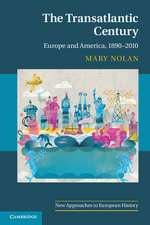The Civilian Population and the Warsaw Uprising of 1944
Autor Joanna K. M. Hansonen Limba Engleză Paperback – 11 aug 2004
Preț: 385.99 lei
Nou
Puncte Express: 579
Preț estimativ în valută:
73.87€ • 76.68$ • 61.59£
73.87€ • 76.68$ • 61.59£
Carte tipărită la comandă
Livrare economică 24 martie-07 aprilie
Preluare comenzi: 021 569.72.76
Specificații
ISBN-13: 9780521531191
ISBN-10: 0521531195
Pagini: 364
Ilustrații: black & white illustrations
Dimensiuni: 153 x 228 x 23 mm
Greutate: 0.55 kg
Ediția:Pbk.
Editura: Cambridge University Press
Colecția Cambridge University Press
Locul publicării:Cambridge, United Kingdom
ISBN-10: 0521531195
Pagini: 364
Ilustrații: black & white illustrations
Dimensiuni: 153 x 228 x 23 mm
Greutate: 0.55 kg
Ediția:Pbk.
Editura: Cambridge University Press
Colecția Cambridge University Press
Locul publicării:Cambridge, United Kingdom
Cuprins
1. Social structure of Warsaw in 1931; 2. Employment in Warsaw industries, October 1941; 3. Wage rates for manual and clerical workers, January 1943; 4. Wage index of municipal manual workers; 5. Free market prices in Warsaw; 6. Availability of electrivity in Polish districts; 7. Comparison of Polish and German monthly ration cards; 8. Percentage and causes of death in Warsaw, 1939–41; 9. Type of persons using soup kitchens, 1941; 10. Distribution of clothing by relief organisations in Warsaw, September 1939–May 1944; 11. Conditions and morale in various houses in Sródmiescie, 31 August 1944; 12. Allocation of water; 13. Comparison of losses in human lives in countries under Nazi occupation.
Descriere
This book analyses of their reaction to the battle itself and to its political and diplomatic implications.
















